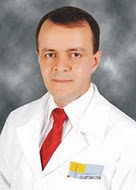
Dr. Marco Versiani
"Advances in MicroCT Imaging"
9:00 am
Sunday, January 21, 2012
International Academy of Endodontics, Annual Meeting
The Fairmont Hotel
Dallas, Texas
Micro-computed tomography (micro-CT), like conventional tomography, uses X-rays to create cross-sections of a 3D-object that later can be used to recreate a virtual model without destroying the original model. A micro-focus X-ray source illuminates the object, and a planar detector collects magnified projection images. Based on hundreds of angular views acquired while the object rotates, a computer synthesizes a stack of virtual cross-section slices through the object. The term micro is used to indicate that the pixel sizes of the cross-sections are in the micrometer range. This also means that the machine is much smaller in design compared to the tomographic hospital devices, and is used to model smaller objects. This non-destructive method allows to scroll through the cross-sections, interpolating sections along different planes, inspect the internal structure, measure 3D morphometric parameters, create realistic visual models, with no sample preparation, no staining, and no thin slicing. The first micro-CT system was conceived and built by Jim Elliott in the early 1980s. The first published X-ray microtomographic images were reconstructed slices of a small tropical snail, with pixel size about 50 micrometers. In endodontics, Tachibana & Matsumoto (1990) investigated the application of X-ray computed tomography and found that 3D reconstruction of teeth was feasible, but a spatial resolution of 0.6 mm produced images that were not really fine enough for detailed analysis. Five years later, Nielsen et al. (1995) evaluated the potential of the micro-CT as an advanced system for detailed endodontic research. Since then, micro-CT has been used as a valuable tool in endodontic research. The aim of this presentation is to describe the most recent advances in micro-CT imaging in endodontics.
Key learning points
- New technologies and techniques have been explored to assess root canal geometry and anatomical changes after canal preparation;
- Three-dimensional methods, which make possible observations from arbitrary viewpoints, are replacing two-dimensional methods for the morphological study of dental pulp cavities;
- X-ray microtomography is a technique that allows three-dimensional images of canal geometry to be obtained before and after an endodontic treatment;
- Micro-CT scanner employs cone-beam geometry and produces true 3D reconstructions of the object with cubic voxels and isotropic resolution.
------